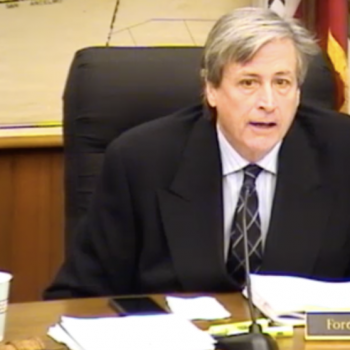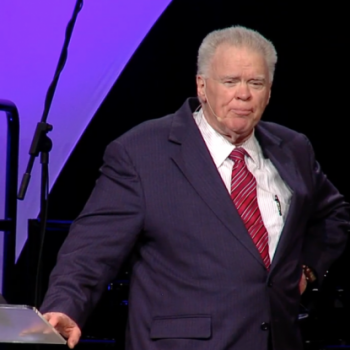The Catholic Church is, yet again, trying to silence allegations of sexual abuse perpetrated by a priest against a child.

There’s a plot twist, though: The child grew up to be a parish priest in the Church he’s now taking to court.
And, predictably, the Church hierarchy is trying to undermine his chance at justice through financial and legal threats.
The unnamed plaintiff — believed to be the first Catholic priest in Australia to bring suit against the Church for child abuse — alleges that he was sexually abused in the 1960s, during his tenure as a student in a Catholic boarding school. His alleged attacker, Clarence ‘David’ Anderson, was a priest and a teacher, and gained access to the child when he was serving as an altar boy.
Anderson is now dead, but eleven of his surviving victims are seeking compensation from the diocese for their experiences of abuse during Anderson’s time in ministry.
The priest says he does not have an ax to grind with the Church; he told the media he initiated the claim so he could “move forward… as a priest in good standing.”
But the Diocese of Lismore has responded by seeking a permanent stay in the New South Wales Supreme Court to prevent the suit, saying that too much time has elapsed since the alleged abuse to allow for a fair trial. In a letter to the plaintiff’s legal counsel, Mark Barrow, the Church threatened to hold the plaintiff responsible for court costs if he did not withdraw his allegations:
The delay in plaintiff [sic] bringing his claim (especially as he is a Priest of the Diocese) has permanently prejudiced our client’s (and arguably all defendants’) capacity to investigate, respond to, and defend the allegations contained in the statement of claim. Your client is invited to withdraw the statement of claim, and if he does so prior to 6 February 2020 our client shall not seek a costs order.
This is far from the first time the Church has responded this way to allegations of abuse in Australia, despite the recommendations of a royal commission on child sexual abuse that examined institutional responses to such incidents, which recommended removing limitation periods from cases of childhood abuse.
The Redress and Civil Litigation Report found that the majority of abuse victims are unable to disclose their abuse during childhood because of the shame and secrecy surrounding sexual matters. On average, it takes more than three decades for an abuse victim to be able to seek redress in court. The commission also encouraged institutions like the Church to keep records for longer to preserve evidence currently unavailable in cases of delayed disclosure.
Instead, the Church prefers to destroy the evidence, then use its absence to give weight to its argument that the case cannot be tried fairly. Many former Catholics are also painfully aware of how the Church promotes a deep sexual shame that further prevents victims from coming forward.
Barrow reports that, in light of the Church’s response to this case, it’s clear that they have paid little heed to the Report’s recommendations:
After the royal commission and what has been said and done, even with reforms we are back to square one, because after the abuse was covered up for so long the Bishop of Lismore is using that delay to avoid justice and pay[ing] fair compensation. Not enough has been done to hold to account bishops who continue to damage survivors of abuse.
Anderson used his position as a popular and charismatic Catholic priest to gain access to the children he harmed. Now, decades later, the Church uses its own practices to justify denying his victims justice.
In cases of childhood sexual abuse in the Church, it’s self-serving corruption all the way down.
(Image via Shutterstock)




It’s Moving Day for the Friendly ..."
It’s Moving Day for the Friendly ..."
It’s Moving Day for the Friendly ..."
It’s Moving Day for the Friendly ..."